Getting kindergarten students to respond to reading is no small feat. Their reading and writing skills are underdeveloped which can make it difficult for them to express themselves. Developing reading comprehension is an important facet of effective teaching reading, therefore, it is imperative that educators include purposeful kindergarten reading comprehension activities in their classrooms. Fortunately, there are several ways that you can ensure that your kindergarten students are responding to what they’re reading effectively.
Once your students are set in their reading routine, it’s time to begin working on their comprehension skills. You can achieve this through many avenues such as via diverse verbal questioning, drawing pictures or through well-designed kindergarten reading response worksheets. Here are some tips and an overview of the order of progression.
Step 1: Diverse Verbal Questioning
To begin their reading response journey it is essential that students are asked LOTS of diverse questions. This is a great way to help readers develop a large repertoire of comprehension skills, particularly when they aren’t able to articulate their ideas in written form yet. It also gets them thinking about the text and gets them accustomed to responding to it which will be useful in later activities. When using verbal questioning, it is important that students are asked a variety of different questions. Questions should go beyond recall knowledge. For example “Who is the main character?” demonstrates recall knowledge only. A better question would be “When have you felt the same way as the main character?” You want students to think critically and most importantly, you want them to connect to what they are reading.
Here are some question ideas:
Step 2: Drawing pictures
This step intertwines with verbal questioning, however, it allows students to respond to reading independently, without your guidance. When you have moved onto guided reading with a different group of students, you can have your previous group draw a picture to answer a reading comprehension question that you have posed to them. This can be completed directly in their workbooks or into a booklet such as the one above. This kindergarten reading comprehension booklet is specifically designed for kindergarteners as well as those students who have not developed writing skills yet. It ensures that they are still able to connect with the texts they are reading in a valuable way. You can grab it here.
Step 3: Combine pictures and sentence writing
Once students are able to write, you can have them express their reading comprehension through both pictures and short sentences. They often need quite a bit of scaffolding to begin with and may benefit from sentence starters to help them begin. These Kindergarten reading response worksheets are designed to support students as they begin their venture into responding to reading. All the pages include sentence starters to help your early readers begin formulating responses. The sheets can be stapled together to create a booklet that can be used all year round. You can grab them here.
The pages included are:
- A Cute Cover
- Making Predictions
- Story Retell
- Main Character
- The Plot
- The Best Part
- The Characters
- My Favorite Character
- The Setting
- The Beginning
- The Problem
- The Solution
- I Would Have
- Interesting Words
- My Book Review
- My Opinion
- Making Connections
- The Lesson
- Invent a Character
- About the Book
The diverse nature of classrooms means that you’ll often be doing all three of these steps at the same time with different groups of students. If you’d like to check out the resources included in this post, you can see them below by clicking on the links below.





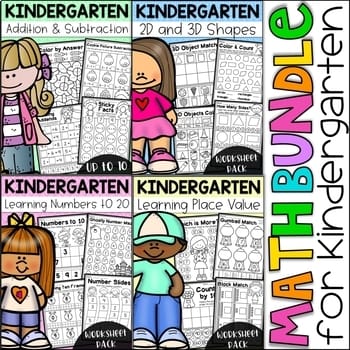



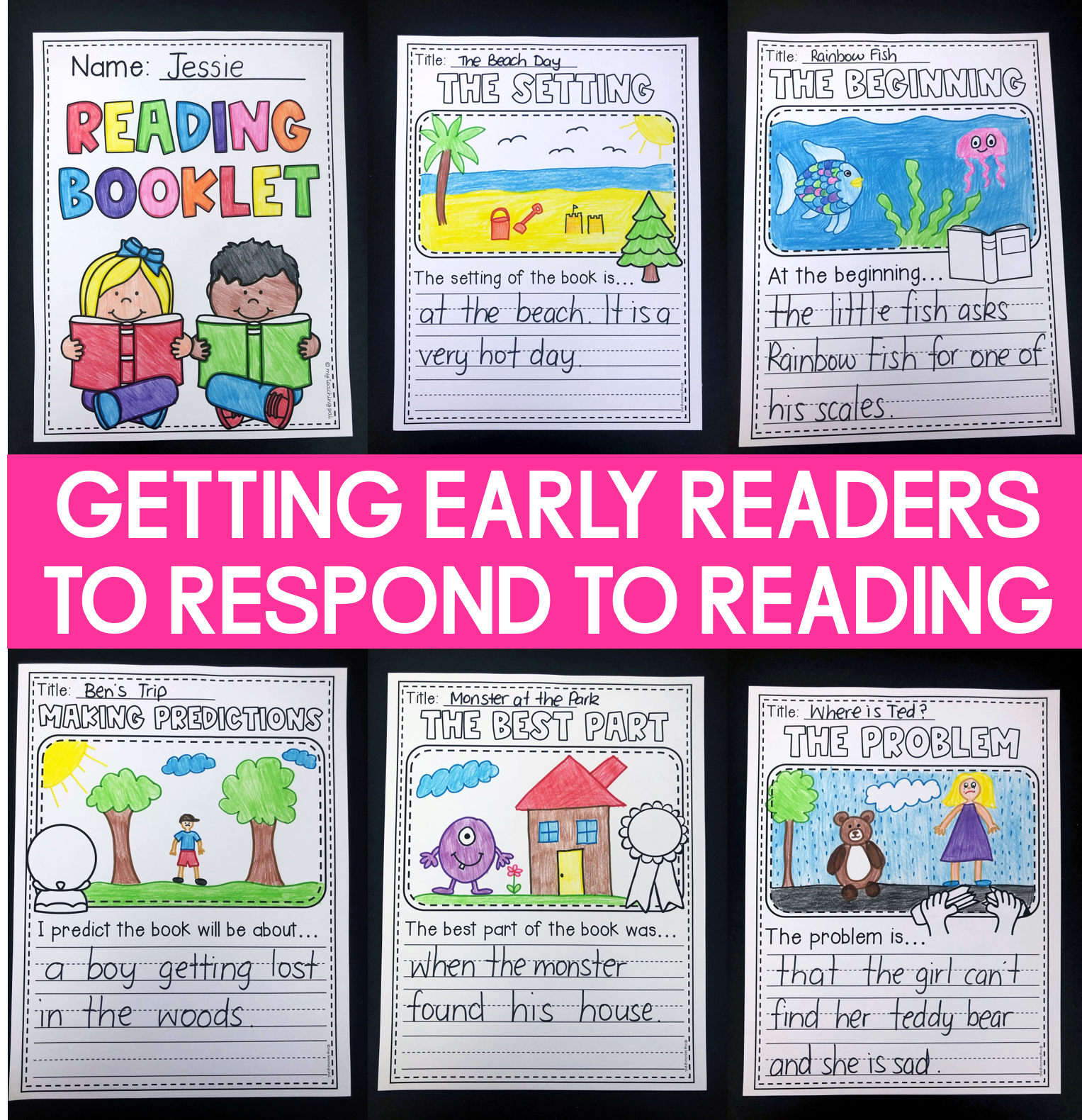
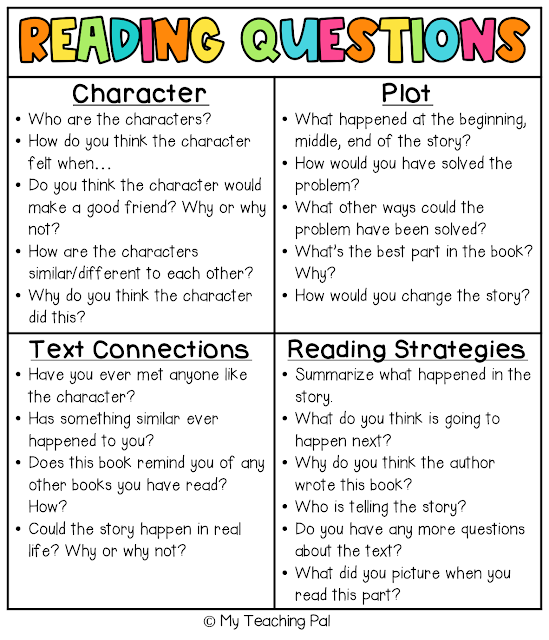


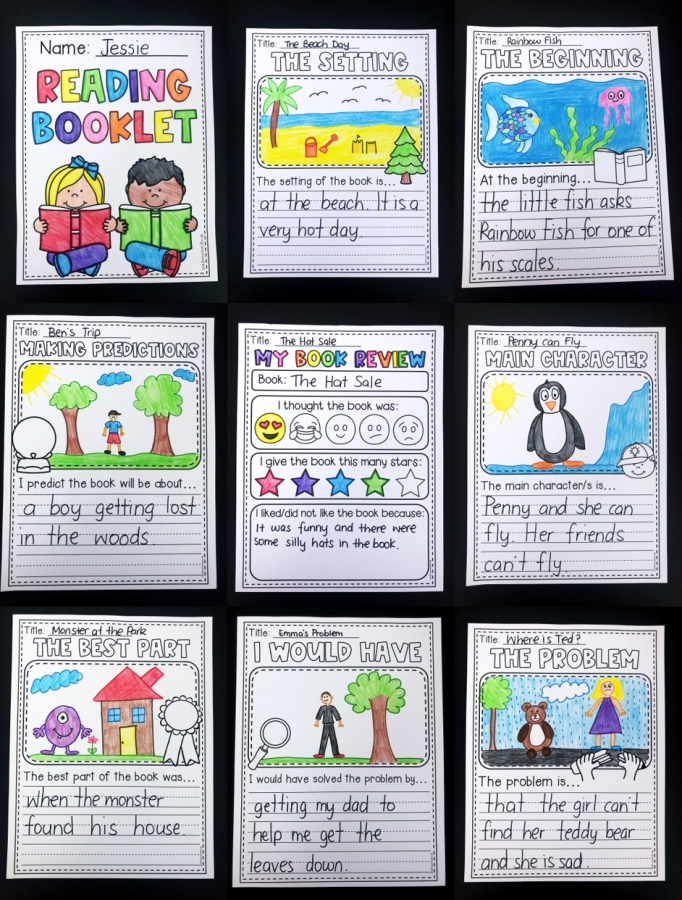





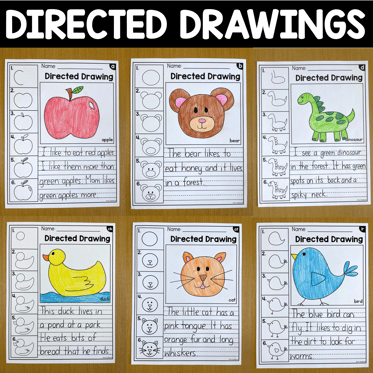
Leave a Comment